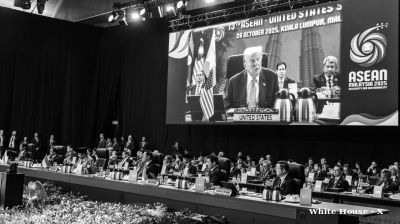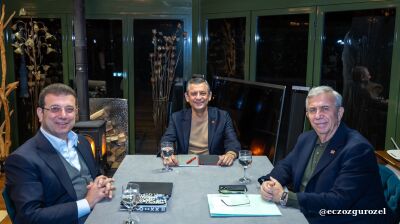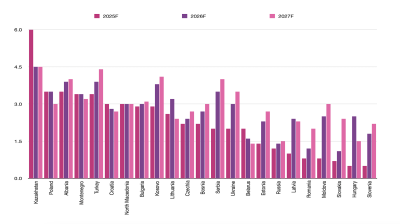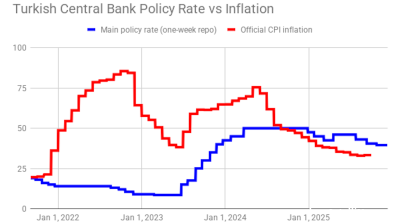As millions of Iranians took to the streets [Fars news agency video] to mourn Qassem Soleimani—the commanding general and second most important Iranian official slain in a Baghdad drone strike ordered by Donald Trump on January 3—and Iran’s military aerospace division commander warned that the only appropriate response would be “the complete destruction of America in the region”, US allies were on January 6 offering Washington only lukewarm support.
Not only Nato, but also Israel, emphasised that they were not involved in the airstrike.
Israeli PM Benjamin Netanyahu told a meeting of his security cabinet: “The assassination of Suleimani isn’t an Israeli event but an American event. We were not involved and should not be dragged into it.”
Nato secretary general Jens Stoltenberg said: “This is a US decision, it is not a decision taken by neither the global coalition nor Nato, but all allies are concerned about Iran’s destabilizing activities in the region, Iran’s support to different terrorist groups.”
Confirming the suspension of the Nato training mission in Iraq—with tensions mounting over possible reprisals from Iran or proxy groups—Stoltenberg added: “In everything that we do, the safety of our personnel is paramount. As such, we have temporarily suspended our training on the ground.”
The Saudi deputy defence minister, Khalid bin Salman, the younger brother of the kingdom’s crown prince, was, meanwhile, in Washington to call for restraint from the Trump administration. Trump has warned any revenge from Iran that targets US member of the military or civilians may be met by a “disproportionate” response.
France’s foreign minister, Jean-Yves Le Drian, warned that without urgent action to successfully address rising tensions there was a real risk of a new Middle East war.
US ambassador summoned
Iraq’s caretaker prime minister, Adil Abdul-Mahdi, summoned the US ambassador to Baghdad, Matthew Tueller, to propose that their two countries cooperate in organising the withdrawal of the more than 5,000 US soldiers currently in Iraq on counter-Islamic State and training missions. However, he did not state a deadline for the departure.
As well as bringing the “destruction” warning from Iranian aerospace commander Brig Gen Amir Ali Hajizadeh, the day also brought news of the Pentagon sending more reinforcements to the Middle East. US defence officials said the roughly 2,500-strong Marine force on board the Bataan Amphibious Ready Group, equipped with Cobra helicopters and Harrier jets, would be sent to the region from their current position in the Mediterranean. Three thousand airborne troops are already bound for Kuwait.
Trump continued to come under heavy criticism for his threat to possibly strike Iranian culture sites in response to any move for vengeance from Iran. He said there would be 52 targets, with the number representing the number of Americans taken hostage when the US embassy in Tehran was seized after the 1979 Islamic Revolution.
“Never threaten the Iranian nation,” responded Iranian President Hassan Rouhani, adding: “Those who refer to the number 52 should also remember the number 290.” That number refers to the number of Iranians killed when a US warship accidentally shot down a civilian airliner, Iran Air 655, in 1988.
Analysts also continued to look at how the Soleimani killing could weaken the Western allies’ forces in the Middle East to the point where terrorist groups such as Islamic State could regenerate.
One of the first tweets Trump sent out during the morning of January 6 on the US East coast was “IRAN WILL NEVER HAVE NUCLEAR WEAPONS!”
News

Milei celebrates resounding victory in Argentina's midterm elections
Argentine President Javier Milei scored a major win for his La Libertad Avanza (LLA) party in Argentina's October 26 midterm legislative elections, as the party obtained approximately 40.84% of the nationwide vote with 99.14% of the votes counted.
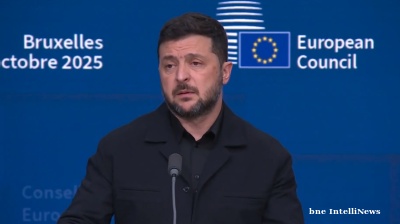
Zelenskiy accuses China of aiding Russia’s war effort through industrial and military support
Ukrainian President Volodymyr Zelenskiy accused China of materially supporting Russia’s military-industrial complex, providing key technologies and resources that have enabled Moscow to sustain and scale its war effort against Ukraine.

US Treasury Secretary Bessent blasts “Russian propagandist” special envoy Dmitriev in Washington PR debacle
A trip to Washington by the Kremlin’s special business envoy Kirill Dmitriev days after the US imposed new oil sanctions turned into a debacle after US Treasury Secretary Scott Bessent blasted him as a “Russian propagandist.”

Trump pledges enduring support for Southeast Asia as new trade deals signed
During his visit to Southeast Asia, US President Donald Trump declared that Washington would remain a steadfast ally to the region, as he signed a series of trade agreements with four ASEAN member states.
